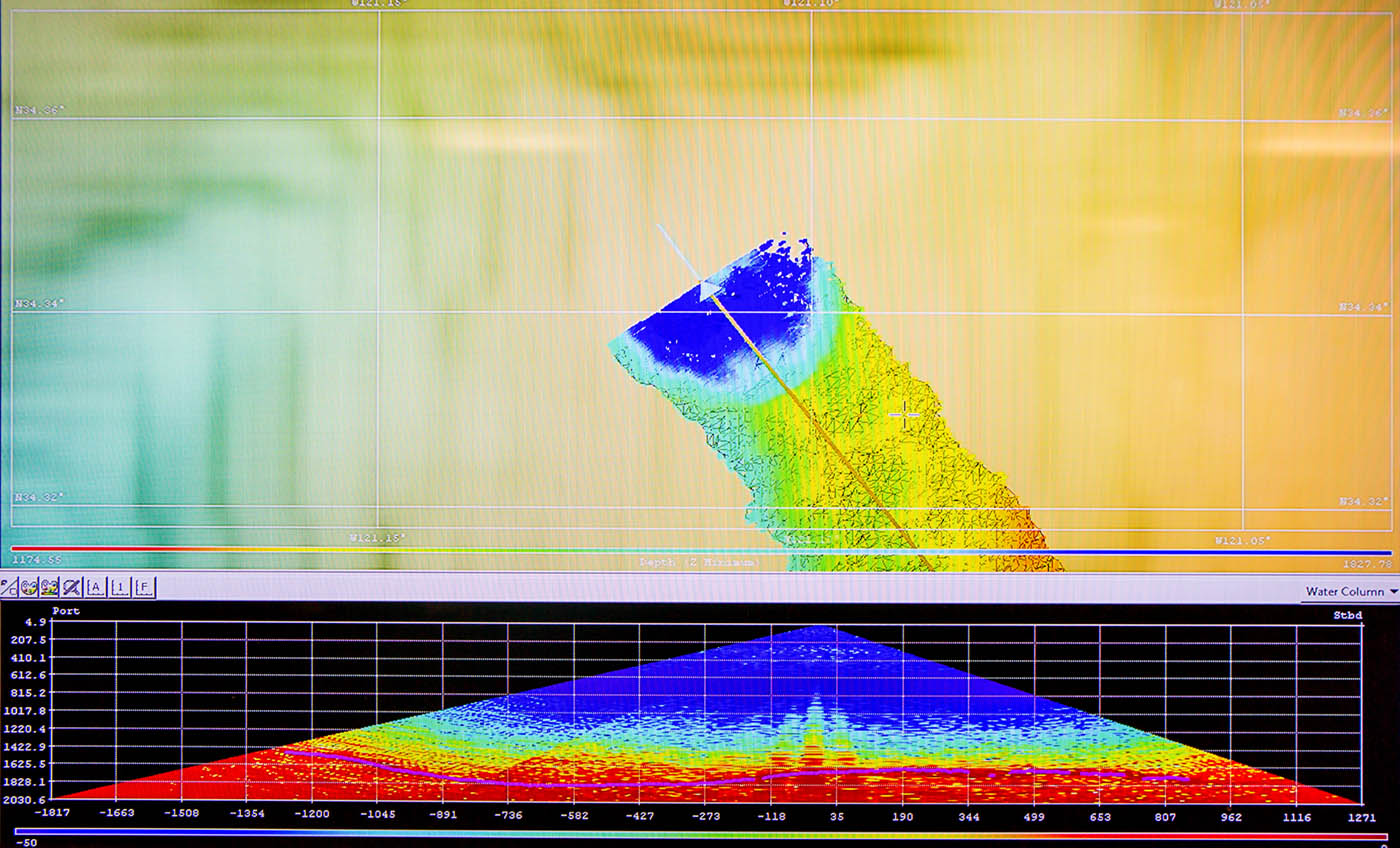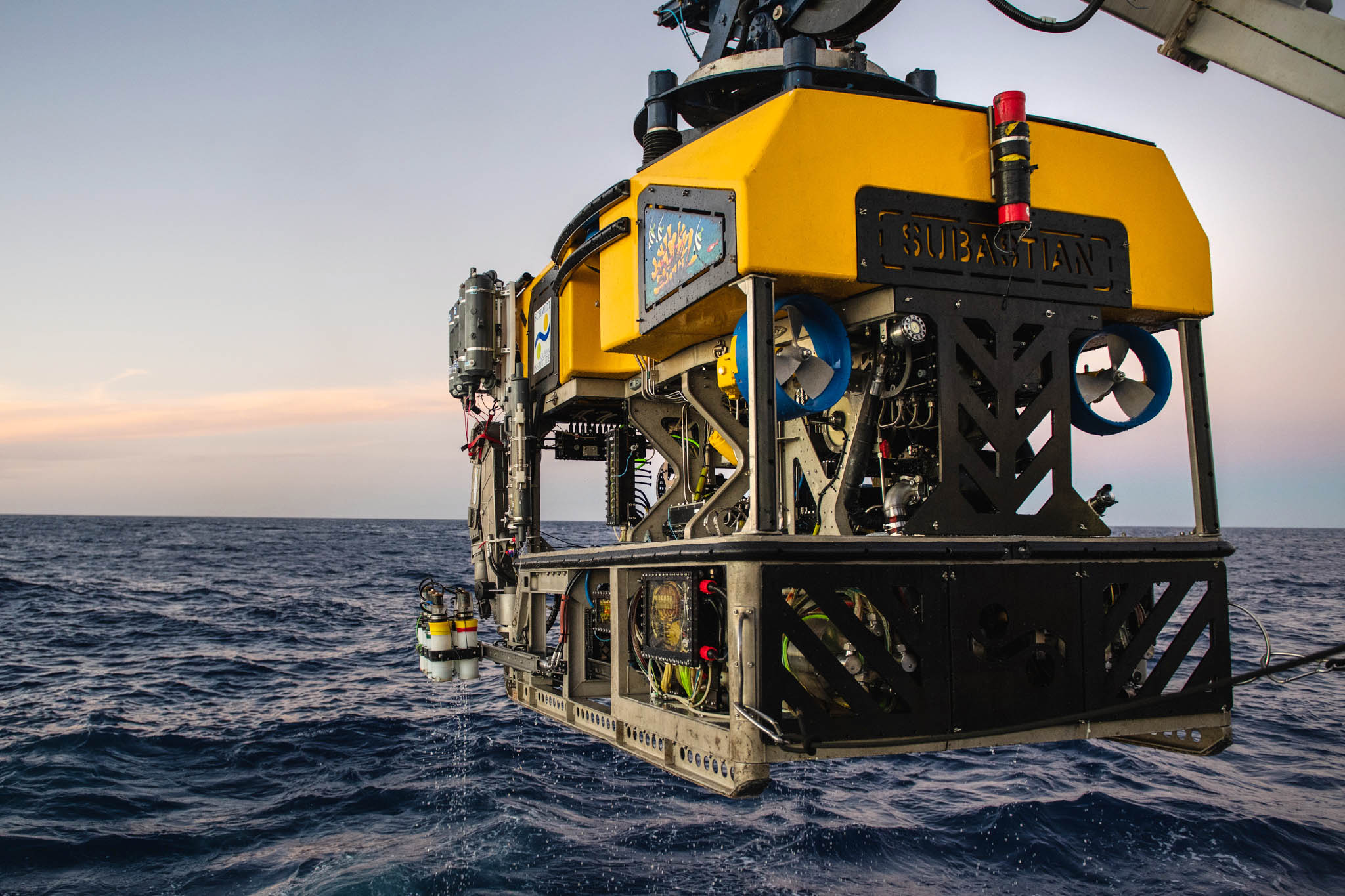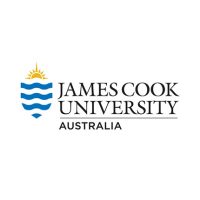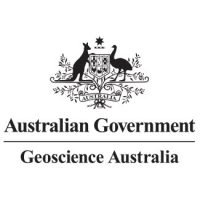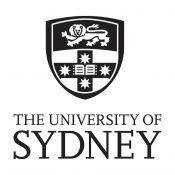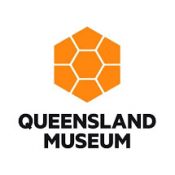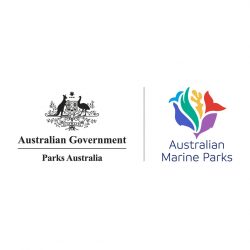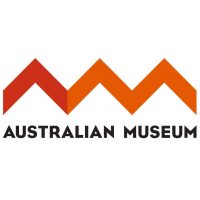Within Australia’s largest marine reserve, the recently established Coral Sea Marine Park, lies the Queensland Plateau, one of the world’s largest continental margin plateaus at nearly 300,000 square kilometers. The plateau contains 30 large coral atolls including the famed Osprey Reef, Lihou Reef, and Diamond Islets. Here a wide variety of reef systems range from large atolls and long banks to shallow coral pinnacles. Virtually unmapped and mostly unexplored beyond the shallower parts of these reefs, Dr. Robin Beaman, James Cook University, and a team of scientists from Geoscience Australia, The University of Sydney, and the Queensland Museum will work remotely with R/V Falkor to conduct unprecedented mapping and exploration of the Queensland Plateau. The expedition will provide insight into the geological evolution and biodiversity of Australia’s marine frontier.
Frontier Science on the Plateau
While shallower areas of the reefs have been studied through SCUBA diving, little is known about the pristine plateau in the vast deeper waters, and scientists only have a general idea of its depth. The deep waters have only been visited several times before by the likes of Jacques Cousteau in the 1980s – down to 240 meters – and a German expedition to 800 meters in 2009. This expedition will provide a novel look down to 2,000 meters into the deeper waters, giving insight into the species that live there and gathering new seafloor maps to better understand the geomorphology (shape of the seafloor).
Very few deep-sea areas in Australia have been studied. Following two successful expeditions exploring the Western Australian coast, this voyage will expand the characterization and understanding of deep sea areas in the Coral Sea Marine Park. As demonstrated by the work done in Bremer Bay, Perth Canyon, and most recently the Ningaloo Canyons, Remotely Operated Vehicle (ROV) SuBastian can make a major impact in the discovery of new species, habitats, and in understanding key processes in these little-known ecosystems. In a country where there are few opportunities to explore the deep sea with a dedicated science ROV, this expedition will have a major impact in visioning the Coral Sea.
Features of the Reef Flanks
In addition to the broad-scale mapping and characterizing of a genuine marine frontier, the vision data collected from these deep-water marine life and their surrounding environments will allow scientists to develop an understanding of the physical and temporal changes that have occurred historically on the Queensland Plateau. The acquisition of baseline mapping and underwater vision data provides a unique window into both the geological past and the present day condition of mesophotic (twilight zone) and deeper cold-water coral ecosystems, allowing for marine park staff to manage and adapt policies for the future.
Preliminary mapping of the Queensland Plateau suggests the presence of many enigmatic seabed features, including numerous drowned reef pinnacles and long meandering channels on the plateau surface. The team aims to completely map, in detail, the steeper reef flanks using high-resolution multibeam mapping, and also target these enigmatic seabed features. Advanced mapping techniques provide the ability to uncover finer-scale features, such as wave-cut caves on the sides of these reefs, which can provide important insight into the past sea levels. Comprehensive mapping is critical to reveal the complete reef morphology from their base up to their shallower depths, and to understand the evolution of the reef system. The new multibeam data will greatly advance the characterization of Australia’s massive and ecologically important marine estate. All data will be added to the Australian government databases and made publicly available.
Life Along the Reef Slope
In addition to obtaining a detailed map of deeper reef structures, ROV SuBastian will capture high-resolution imagery upwards along the steep reef slopes to examine how corals and other species group across large depth gradients. This data will be compared to previous work in the region to identify spatial patterns of deep-sea life. The observations in the Queensland Plateau can provide insight into the biodiversity patterns in similar environments.
Additionally, the ROV dives will help to determine the extent and depth of coral bleaching. Another mass bleaching event recently took place that resulted in scientists finding more than half of the coral reefs bleached beyond the Great Barrier Reef in early March. This expedition will provide an opportunity to look at the mesophotic or deeper reef to see how extensive the bleaching is, and if these reefs could act as a potential refugia for the Great Barrier Reef.
Data & Publications
Data and videos from this expedition are now online on the Australian Marine Parks Science Atlas website.
Multibeam data has been uploaded to the AusSeaBed data portal.
Instructions on how to find the dataset:
Click on Layers in top menu. Select Map Layers > Elevation and Depth > Bathymetry – Survey > Visioning the Coral Sea Bathymetry 2020 64m, then expand. Click ‘Add to Map’. Slide the Opacity bar from 0-100% to view change in coverage.
Annotated imagery is available on Squidle+ [Select SOI ROV SuBastian as Platform and FK200429 as Deployment].
Environmental sensor data collected by Falkor is archived at Rolling Deck to Respository.
CTD, Oxygen, Navigation, Google Earth Visualization and Eventlogger documentation collected by ROV SuBastian is archived at Marine Geoscience Data System.
ADCP data has been processed and archived by UHDAS.
Presentations on cruise outcomes:
Beaman, R.J. (2023). Recently discovered drowned reefs on the Queensland Plateau, Coral Sea Marine Park, Australia, Oral Presentation, Australian Marine Sciences Association Conference, Gold Coast, Australia.
- 30 day Preliminary Post Cruise Report: Visioning of the Coral Sea Marine Park
- Beaman, R. (2021) Schmidt Ocean Institute R/V Falkor Australia Campaign 2020-2021. Oral Presentation and Conference Paper, Sub-Committee on Regional Undersea Mapping, General Bathymetric Chart of the Oceans, Virtual from Paris, France.
- McNeil, M. (2021). No Pandemic-pause for Multi-disciplinary Reef Exploration in 2020. Reef in Review, 50, 8-10. [This article is published as OPEN ACCES].
- Beaman, R., Picard, K., and Miller, A. (2022). RV Falkor Surveys in Australia 2020-2021. Oral Presentation and Conference Paper, Hydrospatial 2021 Conference, Australasian Hydrographic Society, Cairns, Australia. [Abstract and presentation are OPEN ACCESS].
- Mah, C. (2023). A new species of Astrosarkus from Western Australia including new Mesophotic occurrences of Indian Ocean Oreasteridae (Valvatida, Asteroidea). Memoirs of Museum Victoria 82:143-165, doi: 10.24199/j.mmv.2023.82.08. [This article has been published as OPEN ACCESS].
- Betzler, C., Hübscher, C., Lindhorst, S., Lüdmann, T., Hincke, C., Beaman, R., and Webster, J. (2024). Seismic stratigraphic and sedimentary record of a partial carbonate platform drowning, Queensland Plateau, north-east Australia. Marine Geology, 470, doi: 10.1016/j.margeo.2024.107255. [This article has been published as OPEN ACCESS].
Reolid, J., Bialik, O.M., Lindhorst, S., Eisermann, J.O., Petrovic, A., Hincke, C., Beaman, R.J., Webster, J.M., Betzler, C. (2024). A new type of Halimeda bioherm on the Queensland Plateau, NE Australia. Coral Reefs, 1-21. doi: 10.1007/s00338-024-02500-0. [This article has been published OPEN ACCESS].
- Betzler, C., Lindhorst, S., Hincke, C., Eisermann, J., Bialik, O., Petrovic, A., et al. (2024). Dismantling of an isolated tropical carbonate platform through flank collapse and canyon erosion, Coral Sea, Northeast Australia. Marine Geology, 475, doi: 10.1016/j.margeo.2024.107361. [This article is OPEN ACCESS].
- Final Expedition Report: Visioning the Coral Sea Marine Park
In the News
Exploring uncharted territory in the Coral Sea
Earth.com • July 14, 2020
Turning On the Lights in the Ocean’s Twilight Zone
Atlas Obscura • July 07, 2020
Squids are Nature’s Fireworks
Gizmodo • July 07, 2020
Deep-Sea Coral Gardens Near Great Barrier Reef Are Hanging on
Latest Media News • July 02, 2020
Schmidt Ocean Institute Coral Sea Expedition
SeaWaves Magazine • July 02, 2020
The Great Barrier Reef Is Bleaching—but These Striking Deep-Sea Coral Gardens Near It Are Hanging on
Ranzware • July 02, 2020
Deep-Sea Coral Gardens Close to Nice Barrier Reef Are Hanging on
Pakistan Maza • July 02, 2020
The Great Barrier Reef Is Bleaching—but These Striking Deep-Sea Coral Gardens Near It Are Hanging on
Gizmodo – Earther • July 02, 2020
Despite Dire Condition Of Great Barrier Reef, Things Are Far Better Far Below
One Page News • July 02, 2020
Surprising discoveries found in deep waters off Australia
Minnesota Star Tribune • July 02, 2020
De nouveaux coraux et espèces marines découverts dans la mer de Corail en Australie
Nouvelles du Monde • July 01, 2020
SOI: Amidst Pandemic, Seafloor Mapping Zooms Ahead
Marine Technology News • July 01, 2020
La prima spedizione scientifica nella barriera corallina da remoto
New Corals and Marine Species Discovered in Australia’s Coral Sea
Dive Photo Guide • June 30, 2020
First completely remote at-sea science expedition in Australia’s coral sea marine park
Science Daily • June 28, 2020
The Great Wonders Beyond the Great Reef
The New York Times • June 26, 2020
Remote at-sea science expedition reveals exciting new discoveries in Australia’s Coral Sea Marine Park
Oceanographic Magazine • June 26, 2020
Robotic submarine helping uncover deep sea secrets during pandemic
Ark News • June 24, 2020
Remote ocean research during COVID-19
CSIRO Double Helix • June 18, 2020
Scientists discover strange world of bizarre sea life
7 News Brisbane • June 18, 2020
Depths of the Coral Sea
ABC News • June 18, 2020
Coral Sea secrets revealed after pandemic forces change of mission for robot submarine
ABC North Queensland • June 17, 2020
Coral Sea’s deep-water reef secrets revealed as pandemic sees research ship redeployed
ABC News • June 17, 2020
Video: captan un extraño tornado submarino frente a las costas de Australia
Noticias • May 31, 2020
Tornado negli abissi ripreso in Australia, lo strano fenomeno che inquieta gli oceanologi
Il Messaggero • May 30, 2020
Mysterious ‘Underwater Tornado’ Looking Like ‘Devil Winds’ Caught on Camera Off Australian Coast
Sputnik news • May 28, 2020
Przewidywana prognoza pogody dla parku morskiego – słoneczna z możliwością podwodnego tornada
Blue Life • May 27, 2020
Researchers baffled by ‘completely weird’ underwater tornado
UPI • May 27, 2020
Marine researchers from Australia spot underwater ‘tornado’
Free Press • May 27, 2020
Mysteriöses Phänomen in fast 1000 Meter Tiefe gibt Forschern Rätsel auf
Stern • May, 26 2020
Scientists spot underwater tornado-shaped formation
KION • May 26, 2020
Captan tornado en lo profundo de mar de Australia
El Diario • May 26, 2020
Underwater tornado caught on camera
WKRG News • May 26, 2020
Marine researchers spot underwater ‘tornado’ during remote expedition
Yahoo News • May 26, 2020
See a wild underwater ‘benthic tornado’ whirl across the sea floor
Cnet • May 22, 2020
Robin Beaman and Wendy Schmidt Interview – Exploring the Deep
BBC World News • May 22, 2020
RV Falkor discovers unexplored depths of Coral Sea without a single scientist on board
ABC (Australian Broadcasting Corporation) News • May 5, 2020
Marine Fieldwork During a Pandemic
Ocean Best Practices Newsletter • May 4, 2020

